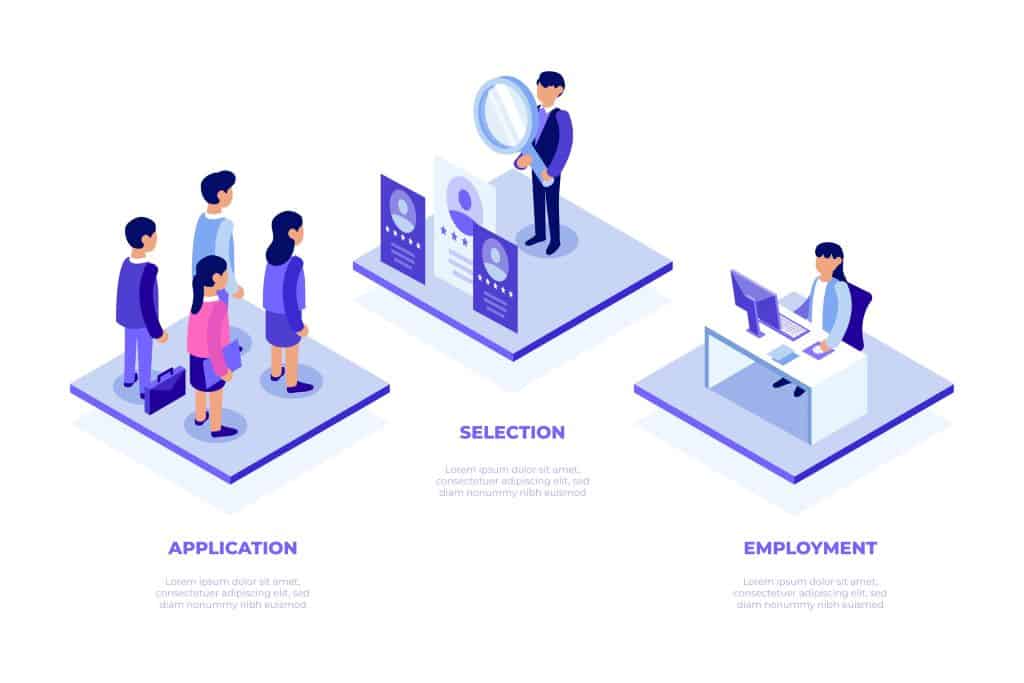One of the main questions many companies struggle with when providing services to their clients is, do we concentrate solely on staff augmentation or take the way of project-based, managed IT services?
For most companies, the solution rests someplace in the middle; make staff augmentation a core business while developing services around specific work areas to give more importance to clients. However, that provides many challenges along the way, and if not done accurately, could lead to not only monetary disasters but also a ruined reputation with clients.
To start, let us explore more about Staff Augmentation and Managed IT services, followed by the pros and cons, and then the differences between them:
Staff Augmentation Meaning
Managed IT Services
Managed services involve obtaining the right staff to succeed, owning, and managing the project deliverables and overall progress. The “project” can be any quantity of things; possibly, a company wants to move to favorable conditions or build a mobile application to assist their brand/outreach.
Pros:
- With outsourced IT staffing from managed service providers, your company gets the advantage of 4/7 support 365 days a year. As a result, you won’t encounter downtime while vacationing.
- Outsourced IT providers have a complete concern in serving you, and exceeding your expectations. Unlike a full-time employee who can build a “less than exemplary” speed and get away with less-than-satisfactory work, a managed service provider has to stay to make your business day after day, year after year.
Cons:
- While great MSPs spend time at your place each week, most of your service issues get managed remotely with a devoted spokesperson. Unfortunately, this gap can often lead to confusion or lack of clarity in getting things done.
Staff Augmentation vs Managed IT Services
Nowadays, businesses have a variety of IT requirements. With the ever-increasing dimensions of IT-related tasks, it becomes essential for the entire network to be steadily maintained and efficiently operated. After all, you cannot put your company at stake because of late reply times or pivots in workflow!
So, if you are in two thoughts about hiring IT staff or outsourcing managed IT services, you have reached the correct place. Here are some comparisons based on significant factors:
- Employment Costs
Employing in-house or remote workers requires specific costs for small to mid-sized companies. The employment cost includes hourly wages, profit costs, and local, state, national taxes, and the cost of worker training. With managed IT services, an agreed-upon amount is spent on the service provider. Therefore, you only need to pay for the services that you are going to avail.
- Overhead Costs
When you hire staff for IT, there are chances for expensive overhead costs, as we provide complete facilities to hired talent. Aside from salaries and payroll, you have to deal with legal fees, accounting costs, and membership and subscription dues. Hiring employees also implies requiring renting, contracting, or buying a larger office, continuing to rent or lease payments.
With managed IT services, there are low or no additional expenses. Of course, you might have to hire someone to carry out secondary tasks and assist with the outsourced team, but the associated costs must be less. For repairs, your service provider can recommend methods that give you discounted prices.
- Convenience
Creating an in-house IT team from the very start can take significant time but provides well-fitted candidates. In addition to this, hiring tech experts take their time to deliver excellent results in the end.
Operating an IT department needs requisite hardware, software, and devices to ensure your processes work smoothly. You get ticketing software, antivirus, and other control tools ready to go with managed IT services.
- Skilled Labour
As discussed, hiring IT professionals can be challenging if you do not have industry information or expert assistance. Their presence helps in successfully hiring someone with the required skill set.
Managed services providers get provided with a crew of qualified and experienced professionals who are competent in handling all kinds of IT-related questions, interests, and problems. Furthermore, these professionals are prepared in particular areas, making managed services a good solution for your IT requirements.
- Proactive Approach
Most small to mid-sized companies struggle to manage a team of IT professionals working in-house, but large companies handle that gracefully. Workers on the team manage IT interests and take all proactive measures to prevent obstacles from occurring.
Whereas Managed IT services providers always keep their systems updated. They plan their schedule patches carefully to keep your business safe from security attacks and anticipate interruptions in everyday operations. Moreover, issues get recognized immediately, which helps bypass escalations and downtime.
- Uninterrupted Support
With in-house services, owning round-the-clock assistance means hiring more than one employee for IT tasks and continuous monitoring and support 24/7.
Also, since you have a dedicated team striving for you, you do not need to bother about your company operations getting hit due to unplanned leaves or extended absenteeism.
- Security
Security warnings overflow in the kind of malware, hackers, and natural disasters. Therefore, your in-house IT worker needs efforts to mitigate risks, defend data, and revive operational processes.
Managed services providers allow various direct security measures, united with proactive maintenance, to help combat security attacks that target system vulnerabilities. Services providers also know regulations, policies, and protocols and guarantee they comply with the same.
- Customised Budget Solutions
Service providers score over in-house IT employees in that they can give you tailored solutions for your company. However, there is always the possibility that IT employees might not know what to do in some situations. It is also possible that they might give resolutions that you do not need by leaving the budget.
Managed services providers not only know constraints but your company’s different workload and performance demands too. As such, they can provide scalable resolutions that work for your business-shifting needs.
What works for your organisation?
Every company has different requirements, and more often than not, seamless functioning is a mere matter of more excellent communication and organisation. IT jobs can be challenging, requiring special care for stable business operations.
Frequently Asked Questions: Staff Augmentation vs Managed IT Services
1. What is staff augmentation?
Staff augmentation is a practice where companies hire external IT professionals or experts to fill specific roles or complete projects on a temporary basis. These professionals work alongside the existing in-house team and provide their skills and expertise to enhance the company’s capabilities.
2. What are the advantages of staff augmentation?
- Access to a specialized skill set: Staff augmentation allows companies to quickly acquire the specific skills they need for a particular project or task without the need for long-term commitments.
- Cost-effective: Hiring IT professionals on a contract basis can be more cost-effective than maintaining a full-time staff, especially for short-term projects or when the workload fluctuates.
- Scalability: With staff augmentation, companies can easily scale their IT workforce up or down based on their current needs, ensuring optimal resource allocation.
- Knowledge transfer: The external IT professionals brought in through staff augmentation can share their expertise and best practices with the internal team, fostering skill development and knowledge transfer.
3. What are the disadvantages of staff augmentation?
- Integration challenges: The integration of external staff into an existing team can sometimes be challenging, as there may be differences in work styles, communication methods, or company culture.
- Lack of long-term commitment: Since staff augmentation is a temporary solution, there may be a lack of long-term commitment from the external professionals, which could affect the continuity and stability of the project.
- Limited involvement in strategy and planning: Staff augmentation professionals are primarily focused on specific tasks or projects, which may limit their involvement in broader strategic decision-making processes.
4. What are managed IT services?
Managed IT services involve outsourcing the management and support of a company’s IT infrastructure, systems, and processes to a third-party service provider. This provider takes responsibility for monitoring, maintaining, and optimizing the company’s IT systems, ensuring they run smoothly and efficiently.
5. What are the advantages of managed IT services?
- 24/7 support: Managed IT services provide round-the-clock support, ensuring that any IT issues or emergencies are promptly addressed, minimizing downtime and interruptions to business operations.
- Expertise and specialization: Managed service providers have a dedicated team of IT professionals with specialized skills and experience in various domains, providing a higher level of expertise than may be available in-house.
- Proactive approach: Managed IT service providers continually monitor the company’s IT systems, identify potential issues before they become problems, and implement preventative measures to ensure smooth operations.
- Cost-effectiveness: With managed IT services, companies only pay for the specific services they need, eliminating the costs associated with maintaining an in-house IT department, such as salaries, benefits, and training.
6. What are the disadvantages of managed IT services?
- Potential lack of familiarity with company culture: As managed IT service providers work with multiple clients, there may be challenges in fully understanding and aligning with the specific culture and values of the company.
- Dependency on external provider: Companies relying on managed IT services may become heavily dependent on the service provider, which could pose risks if the provider experiences difficulties or ceases operations.
- Limited control over resources: Outsourcing IT services means that companies have less direct control over the resources and personnel involved in managing their IT systems.
7. How to decide between staff augmentation and managed IT services?
The decision between staff augmentation and managed IT services depends on various factors such as the nature of the project, the required skill set, budget considerations, and the company’s long-term IT strategy. It is advisable to assess the specific needs, resources, and goals of your organization to make an informed decision. Consulting with IT experts or service providers can also help in evaluating the best fit for your organization.
Remember, there is no one-size-fits-all solution, and a tailored approach based on your unique requirements will yield the most suitable results.
Note: For detailed consultation and assistance in determining the best service for your organization, you can contact BRIDGENTECH.
This blog makes it clear that staff augmentation and managed services offer tremendous benefits to all-sized businesses. Furthermore, both services are best in their way. So do not worry about the unknown; make a knowledgeable choice and help your business grow! Get in touch with BRIDGENTECH to learn which service is best suited for you.








